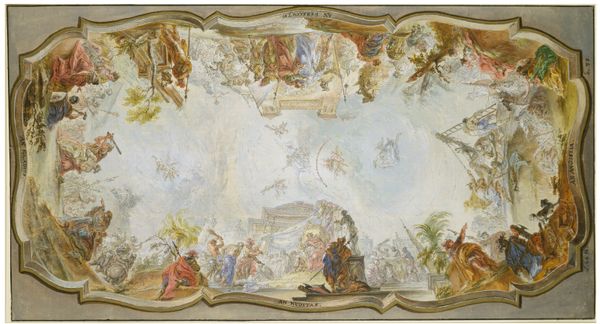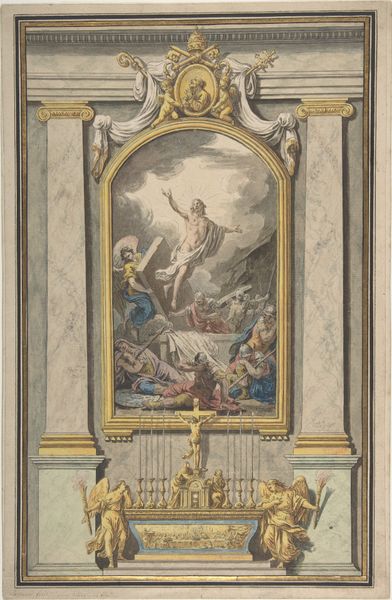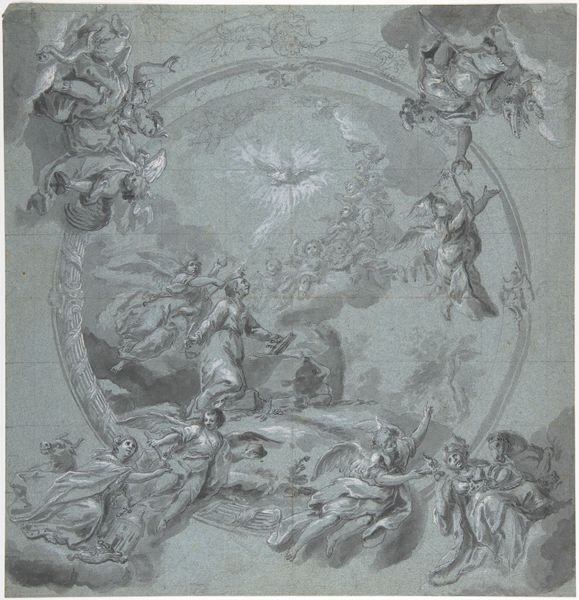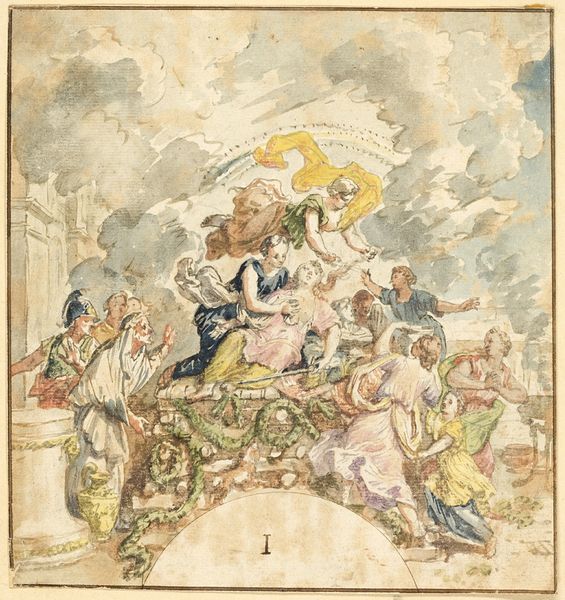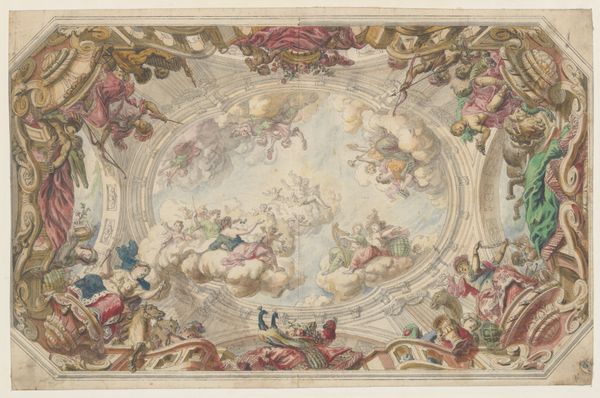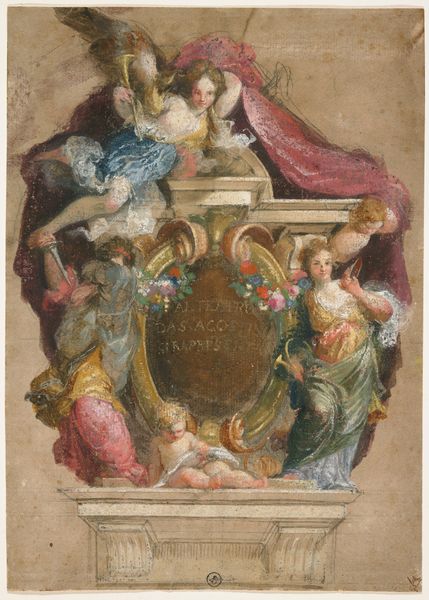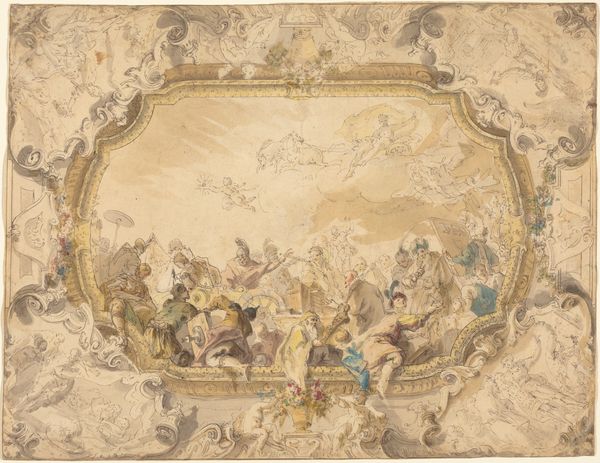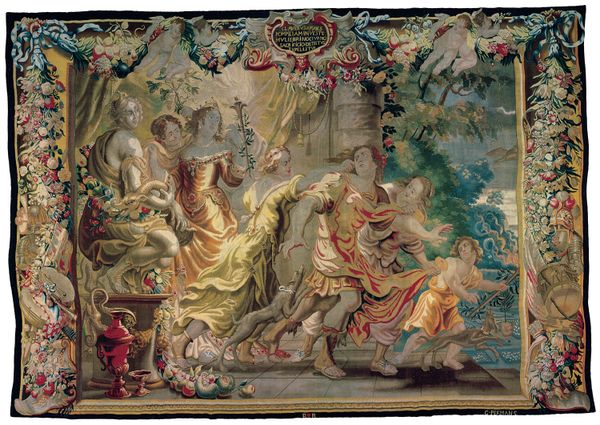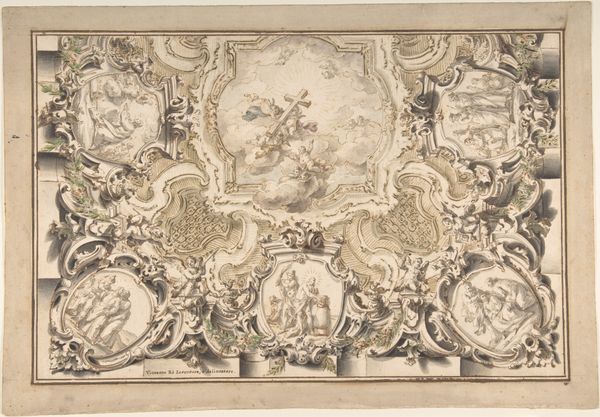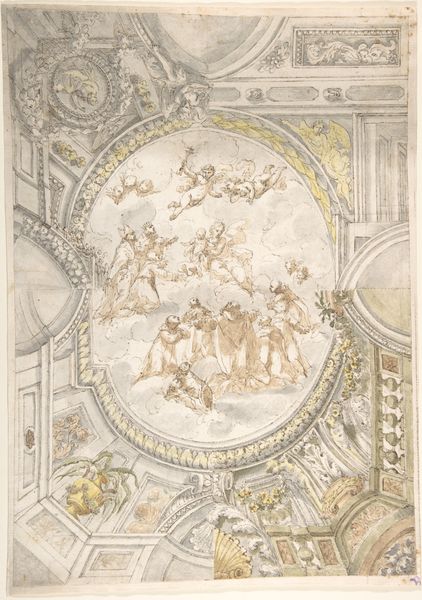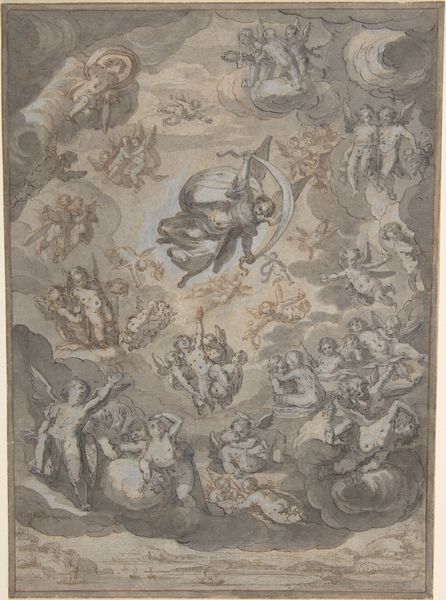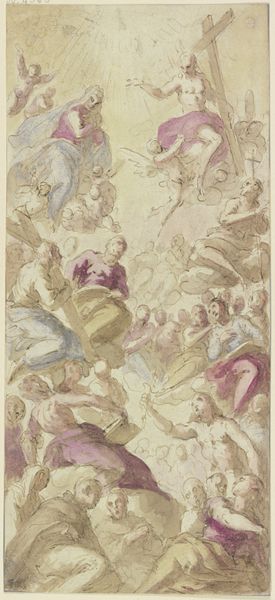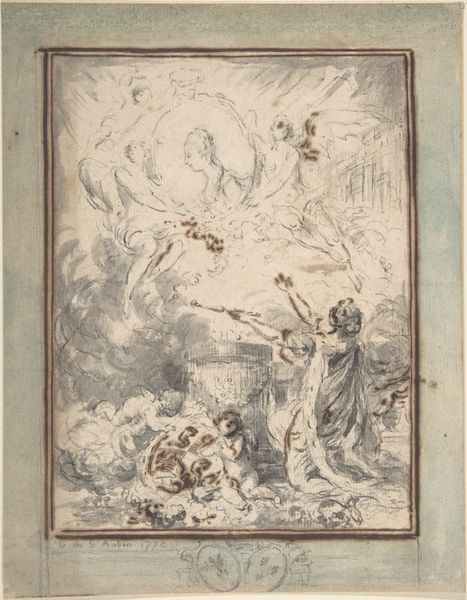
Copyright: Public Domain
Editor: So, this is Johann Baptist Enderle’s "Verklärung der Apostel Petrus und Paulus," a watercolor painting from around 1775. It's incredibly detailed and has this celestial, almost theatrical feel to it. How do you interpret this work? Curator: This piece presents an intriguing study in power dynamics and the public image of faith during the late 18th century. Consider its placement; likely designed for a church ceiling or a prominent wall. What kind of message do you think it aims to project to the viewer, considering the Baroque style and its allegorical content? Editor: I guess, looking at it now, it’s not just about the religious narrative but about communicating the Church's authority, especially given the figures bowing at the bottom, surrounding a sphere…perhaps representing worldly power? Curator: Precisely. The composition itself is a hierarchy. God sits above St. Peter and Paul, and they tower over the earthly figures. This vertical arrangement reinforced social and religious order. Also, consider the role of art within religious institutions during this time. Editor: It was a powerful propaganda tool? An expected part of the social landscape. Curator: Exactly. Religious institutions were major patrons of the arts. They used art to visually assert their dominance and influence, shaping public perception and reinforcing established doctrines. What effect do you think that had on artists like Enderle? Editor: Well, it meant they were creating within a very specific framework. It would make the Church's social influence integral to the artwork itself. Curator: And what might seem, from a contemporary point of view, as simply a religious painting reveals itself to be an active participant in the social and political discourse of its time. It’s fascinating how a piece of art can simultaneously be a devotional image and a tool for social control. Editor: Absolutely! It really makes you consider the social and institutional context that shaped its creation, and its continued display and perception. Thanks, I've certainly learned a new perspective on how to look at Baroque art!
Comments
No comments
Be the first to comment and join the conversation on the ultimate creative platform.
